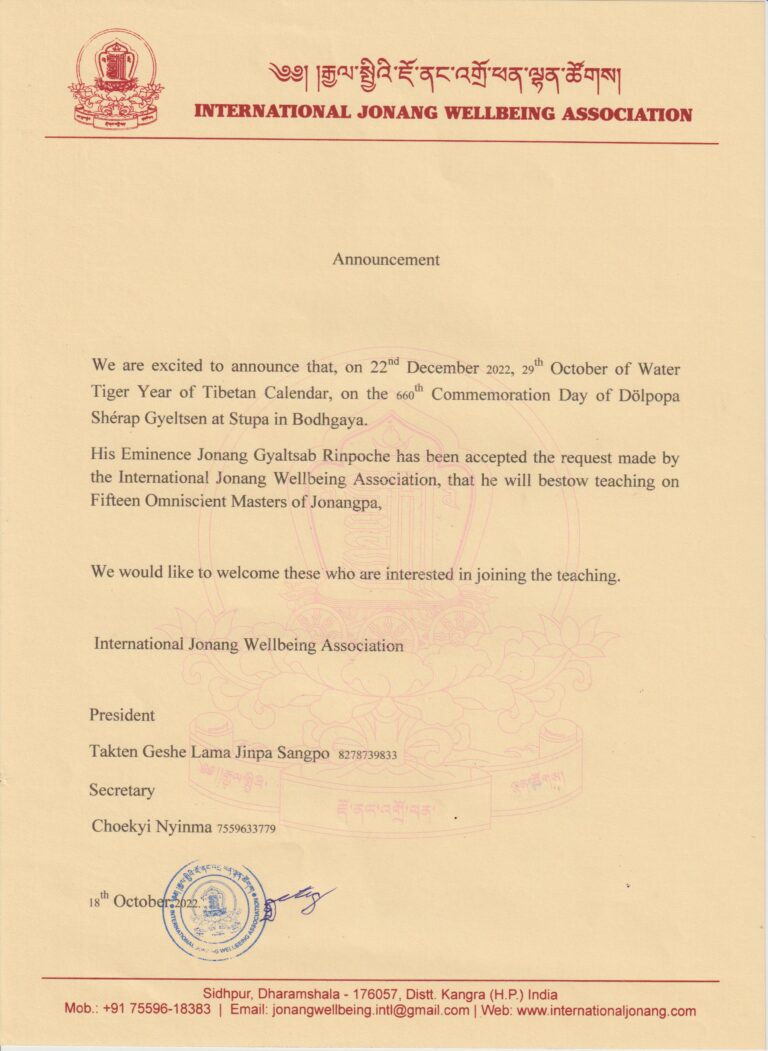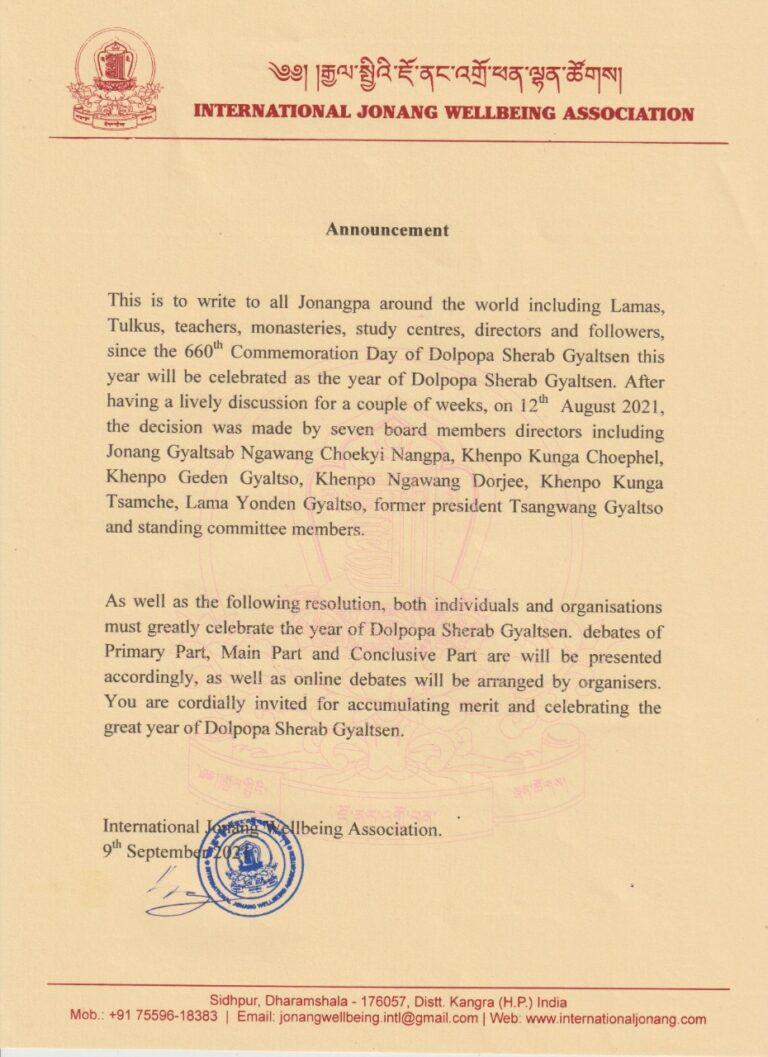Lama Tāranātha
Born in A.D. 1575, Kun-dga’-sñiń-po (= Anandagarbha), better known as Lama Tāranātha, wrote this work in 1608, i.e. at the age of 34, according to the Tibetan mode of calculating the age. This work is usually referred to as rGya-gar-chos-“byuň, which means “the history of Buddhism in India”. But the brief title Tāranātha himself chose for it was dGos-‘dod-kun-‘byui, literally “that which fulfils all desires”. The corrupt Indian form in which the name occurs in the title-page of its Potalá edition (1946), namely Kārya-kāma-sarva-pravrtti-nāma, is evidently intended to convey the same idea. Thus the history of Buddhism in India was for Tãranātha something more than mere history. It was also the māhātmya of Buddhism : the account was intrinsically auspicious, so much so that it led to the fulfilment of all desires. But there is nothing extraordinary about this. As Vasil’ev (spelt Wassiljew in German) rightly remarks. historiography for the Buddhists had always been an important mode of propagating their creed. In Tibetan writings Tāranātha is usually mentioned as “Jo-nan Tāranātha” or “rje-btsun (= bhattāraka) Tāranātha of the Jo-nảń sect”. Jo-nań is the name of a place with a lofty caitya and a convent about a hundred miles to the north-west of the Tashi-lhun-po. The sect of Tibetan Buddhism which had Jo-nań as its stronghold came to be known as the Jo-naň-pa sect. The founder of this sect was Phyogs-las-rnam-rgyal. (= Digvijayi), born in A.D. 1306. It appears that a pronounced enthusiasm for the Kālacakra Tantra constituted an important feature of its creed. Tāranātha himself, a later leader of the sect, was famous as an author of several works and “guide-books ” (khrid-yid) on the Kālacakra doctrine, which Roerich wanted to analyse-a project unfortunately left unfinished by him. The chief monastery of the Jo-nań-pa sect—rTag-brtan-phun-tshogs-glii ( = the perfect and eternally firm island)-had a printing establishment well-known in Tibet. The complete works of Täranātha were published by it. A copy of this is preserved in the Tsybikov Collection, Institute of the Peoples of Asia (now renamed as the Institute of

